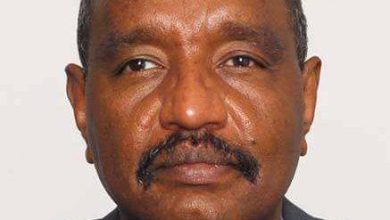Mediation or Machination: Kenya’s Role in Sudan’s Proxy War

By Sabah Al-Makki, Assistant Editor, Brown Land News
Beneath Kenya’s public posture as a peace broker in Sudan lies a deeper architecture of entanglement—one that links narrative diplomacy with covert logistics and proxy warfare. This multi-part investigation traces how neutrality gave way to complicity, how mediation masked militarization, and how a regional actor once trusted with dialogue now stands accused of enabling war.
Part I: The Veil and the Vault
Kenya’s Dual Role in Sudan’s Proxy War—From Diplomatic Mask to Material Complicity
In response to public remarks delivered on June 16, 2025, by Kenya’s Government Spokesperson, Dr. Isaac Mwaura—who openly acknowledged and appeared to justify the United Arab Emirates (UAE) material support to the Rapid Support Forces (RSF)—the Republic of Sudan issued a formal diplomatic protest.
In its communiqué dated 22 June 2025, the Sudanese Ministry of Foreign Affairs condemned Kenya’s position as an overt legitimization of foreign interference in Sudan’s internal affairs, constituting a breach of international law, including the UN Charter, the Constitutive Act of the African Union, and the Convention on the Prevention and Punishment of the Crime of Genocide.
The statement further denounced Kenya’s decision to host the RSF’s signing of a “political agreement” in Nairobi—a move Sudan characterized as an unlawful attempt to establish a parallel authority on its sovereign territory. Such facilitation, the communiqué argued, promotes the fragmentation of African states, contravenes the principle of non-intervention, and undermines regional stability.
Citing the ongoing perpetration of grave crimes by the RSF—including genocide, ethnically targeted killings, sexual violence, and attacks on displaced populations—Sudan accused Kenya of providing political and propaganda cover to a designated terrorist entity. The act, it stated, rises to the level of complicity in atrocity crimes and constitutes a hostile act against the Sudanese state and its people.
The Ministry recalled Kenya’s prior commitments not to permit its territory to be used for hostile activities against Sudan, noting that those assurances had been flagrantly violated. It called upon the international community to condemn this unlawful interference and affirmed Sudan’s sovereign right to adopt all necessary measures to safeguard its territorial integrity and national unity.
*I. Beneath the Banner of Peace: The Erosion of Neutrality*
For over two years, the Republic of Kenya has projected an image of principled impartiality about the war unfolding within the Republic of Sudan. Through high-profile diplomatic engagements and public alignment with the normative frameworks of the Intergovernmental Authority on Development (IGAD) and the African Union (AU), Nairobi positioned itself as a neutral convener—an arbiter of dialogue committed to regional stability, multilateral diplomacy, and humanitarian concern.
Yet behind this polished façade lies a far graver reality: a multidimensional entanglement of Kenyan state institutions—politically, logistically, and financially—with the RSF, a foreign-backed rebel militia waging a full-scale war against the Sudanese state.
This alignment, no longer confined to the realm of speculation, is now substantiated by a convergence of verifiable evidence—including documented flight activity, as shown in the UN Panel of Experts report (S/2024/65, para. 41), alongside transactional trails, diplomatic movements, and formal communications from Sudanese authorities.
The architecture of Kenyan neutrality has not simply eroded—it has collapsed under the weight of fact. What remains is not a contested narrative but an evidentiary reality that demands international scrutiny and regional accountability. The illusion of impartiality has given way to a demonstrable pattern of alignment. The question is no longer whether Kenya has overstepped the bounds of mediation but to what extent it has abetted a proxy insurgency against a sovereign state.
II. A Fiction of Symmetry: Kenya’s Illusion of Neutrality
In a recent public statement, Kenyan Government Spokesperson Dr. Isaac Mwaura asserted that Nairobi had hosted both Lt. General Abdel Fattah al-Burhan, Chairman of Sudan’s Sovereign Council, and Mohamed Hamdan Dagalo (Hemedti), leader of the RSF militia, in pursuit of a peaceful resolution to the Sudanese conflict. However, official diplomatic records indicate no evidence of Lt. General Al-Burhan’s participation in any Kenyan-hosted dialogue.
The only documented engagement was an RSF-organized summit in Nairobi, during which the group theatrically proclaimed a so-called parallel “Government of Peace and Unity”—a political fabrication by a sanctioned non-state armed group, not a legitimate mediation effort.
This was not facilitation. It was the unilateral elevation of a militia to sovereign equivalence—a posture that contravenes core tenets of international law, the Constitutive Act of the African Union, and the principle of non-recognition of unconstitutional entities. Kenya’s actions substituted legitimacy with optics and neutrality with implicit endorsement.
Further eroding the credibility of Nairobi’s neutrality was Dr. Mwaura’s public acknowledgment that the UAE is financing the RSF—citing economic interests in Sudan’s gold reserves, arable land, and strategic maritime access to the Red Sea. This admission, delivered from Kenya’s highest communications office, affirms what Sudan has long asserted: the RSF is not an organic insurgency but a foreign-sponsored militia executing extraterritorial objectives.
This admission exposes a critical contradiction. If Kenya accepts that the RSF is externally funded and politically instrumentalized by a foreign power, how can it simultaneously legitimize the group by granting it diplomatic platforms, hosting its political declarations, and enabling its media narratives? Such conduct is incompatible with the foundational criteria of mediation.
Mediation presupposes impartiality—not narrative amplification, logistical accommodation, or political endorsement of one belligerent actor. Kenya’s posture does not reflect neutrality; it reflects alignment. The distinction between host and architect has blurred—with it, the credibility of Kenya’s role as a peace broker in Sudan.
III. Realignment by Omission: The Geopolitical Selectivity of Blame
In an apparent effort to deflect scrutiny from Kenya’s entanglement with the RSF, Government Spokesperson Dr. Isaac Mwaura introduced a rhetorical diversion: asserting that Egypt and the Islamic Republic of Iran are backing Sudan’s national army. This attempted equivalence—between a constitutionally mandated national force and a sanctioned non-state paramilitary group accused of systematic atrocities—does not merely distort reality. It undermines the foundational principles of sovereignty and international law.
The Sudanese Armed Forces (SAF) are not a faction. They are the internationally recognized custodians of Sudanese sovereignty, duly constituted under the national charter to preserve territorial integrity and uphold the state’s legal and political continuity. Their bilateral defense partnerships—with Egypt, Turkey, Saudi Arabia, and, more recently, Iran—are wholly consistent with established norms of intergovernmental military cooperation. As Kenya maintains strategic defense relations with the United States, Israel, and others, Sudan is equally entitled—under international custom and sovereign prerogative—to determine its security alliances.
More telling, however, is the selective invocation of Iran while omitting states such as Turkey and Saudi Arabia—each of which maintains formal defense ties with Khartoum. This selective framing is not a product of neutrality; it is narrative engineering. It aligns with earlier disinformation efforts, including a UAE-sponsored article in The Jerusalem Post, which sought to falsely portray Sudan’s national military as aligned with Iran’s Islamic Revolutionary Guard Corps (IRGC)—an attempt to justify coercive sanctions and recast Sudan as a destabilizing actor in the Red Sea.
Such maneuvers do not constitute diplomacy. They represent deflection masquerading as discourse—a calculated deployment of strategic accusation designed to obscure the transnational patronage networks that enable proxy violence.
Economic realities further expose the hypocrisy embedded in this tactic. The UAE—Kenya’s principal economic partner and the RSF’s primary sponsor—recorded over $19 billion in bilateral trade with Iran (March 20, 2024 – February 19, 2025). Yet, while the UAE engages Tehran for strategic gain without censure, Sudan is vilified for far less substantive engagement. The message is unmistakable: Diplomacy is celebrated when exercised by dominant actors yet criminalized when pursued by sovereign states that refuse to submit to external coercion—states like Sudan, which assert their independence not from weakness but from a principled refusal to yield to foreign agendas.
This is not mediation. It is the instrumentalization of moral discourse to delegitimize a recognized government while sanitizing the image of a foreign-sponsored militia.
The implications transcend Sudan’s borders. If IGAD and the African Union allow a member state to host, empower, and politically amplify a paramilitary actor credibly accused of war crimes and crimes against humanity—under the pretense of neutrality—they do not merely abdicate responsibility. They erode the credibility of Africa’s continental peace and security architecture and invite further destabilization through precedent.
IV. The Weapon Trail: Kenya’s Fingerprints in RSF Depots
Kenya’s erosion of neutrality in Sudan’s armed conflict has progressed beyond narrative alignment—it is now materially embedded in the mechanics of violence.
On 16 June 2025, a six-month joint investigation by Nation Media Group (NMG) and Bellingcat, a leading international open-source intelligence organization, produced verified visual and forensic evidence confirming the recovery of ammunition crates bearing official markings from Kenya’s Ministry of Defence within RSF-controlled stockpiles in Al-Salha, Omdurman.
These were not ambiguous associations. The munitions were live, intact, and traceable. Crate markings included contract references (AMI/KEN/099/2023), batch numbers, and serial codes corresponding to Kenya’s official military procurement records. Among the recovered materiel were 14.5×114mm armor-piercing incendiary rounds and 82mm high-explosive mortar shells—of Chinese origin but procured and exported under Kenyan contracts—both consistent with weapon types employed by RSF units in urban combat theatres.
The cache’s location—a confirmed RSF military depot in Al-Salha, Omdurman, subsequently abandoned during the SAF’s recapture of the area—was authenticated through satellite imagery, open-source geolocation, and metadata analysis. The evidence is not speculative. It is empirical, methodologically sound, and independently verified.
This assessment was further substantiated by an independent investigation conducted by NTV Kenya, which aired publicly on YouTube under the title “Exposed: The Kenya–Sudan Shadowy Arms Deal.” The broadcast presented verified footage and forensic evidence confirming the presence of Kenyan-marked munitions at the site. The evidence is not speculative; it is empirical, methodologically sound, and independently corroborated.
This pattern mirrors previously documented cases of illicit arms diversion—most notably, the transfer of Bulgarian-manufactured weapons, originally procured by the RSF’s principal patron, the United Arab Emirates, and subsequently funneled directly into RSF hands. As revealed in a multi-part investigation by France 24 Observers, these transfers exploited opaque procurement networks and re-export loopholes to evade international oversight.
However, the current case departs in one critical respect: the point of origin is no longer Eastern Europe—it is Kenya. A fellow IGAD member state. A self-declared neutral actor. A signatory to regional peace frameworks. And now, the documented source of combat materiel found in the possession of a non-state militia credibly accused of mass atrocities and crimes against humanity.
In response, Kenya’s Ministry of Defence issued a narrowly worded statement disclaiming domestic manufacture and denying any official authorization of the transfers. Yet this denial—couched in generalities about audits and constitutional mandates—strategically sidesteps the core question: how did Kenyan-labelled munitions, procured under formal military contracts, end up in RSF-controlled depots during a campaign marked by ethnically targeted violence?
The Ministry’s failure to engage with the forensic specifics—batch numbers, contract codes, and plausible mechanisms of re-export or third-party diversion—is not merely insufficient. It is revealing. It underscores critical deficiencies in Kenya’s arms control regime and raises the specter of gross negligence, institutional complicity, or deliberate obfuscation.
In conflicts of this gravity, arms flows are not accidental. They are orchestrated. They reflect deliberate choices—political, commercial, and geostrategic. Kenyan-marked military materiel in RSF depots cannot be dismissed as a procedural anomaly. It is a breach of neutrality, a violation of trust among IGAD and African Union member states, and a direct subversion of the peace and security architecture Kenya purports to uphold.
Conclusion to Part I: The Collapse of Credibility
Kenya’s self-ascribed role as a neutral broker in Sudan’s conflict has been irreparably compromised—not by speculation but by verifiable evidence. From the orchestration of exclusive RSF political platforms to rhetorical deflection through selective geopolitical blame and the tangible discovery of Kenyan-labelled munitions in militia-controlled territories, the pattern is no longer deniable. It is structural.
What emerges is not a portrait of impartial facilitation but a record of asymmetric engagement—a record that privileges one belligerent actor while eroding the foundational principles of sovereignty, non-intervention, and collective security that IGAD and the African Union are sworn to uphold. Kenya has crossed the threshold from convenor to stakeholder by embracing narrative diplomacy while enabling military complicity.
If neutrality is the currency of mediation, then credibility is its reserve. Kenya has exhausted both.
Prelude to Part II: War by Other Means
This entanglement runs deeper than political gestures and weapons caches. Behind the façade of diplomacy lies a more entrenched architecture of proxy alignment—one constructed not only through narrative and logistics, but through gold, financial networks, and covert statecraft. From clandestine visits to Sudanese airstrips by then–Deputy President William Ruto, to the laundering of conflict minerals and the quiet dismantling of judicial trails, the next chapter reveals how rhetorical complicity evolves into structured economic conspiracy—and how foreign interests are monetized through war.
Part II—War by Other Means will trace the triangulated nexus between the RSF, Kenya, and the UAE—where arms are traded for gold, influence is brokered through shadow diplomacy, and impunity is secured by design.
Originally published by Brown Land News on June 25, 2025. Republished here with permission



